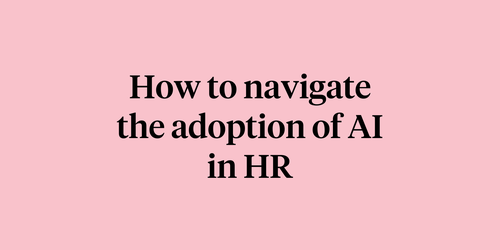
Written by

Senior Content Marketing Manager, Culture Amp
Whether it's a meditation room in the office, subsidized yoga classes, or app subscriptions, companies around the world have been offering perks to help employees cultivate mindfulness.
But what is mindfulness, exactly? And is it something that leaders should be fostering in their workforce? In this article, we answer these questions and provide a few considerations to keep in mind when trying to promote mindfulness among your employees.
What is mindfulness?
Greater Good Magazine defines mindfulness as:
Maintaining a moment-by-moment awareness of our thoughts, feelings, bodily sensations, and the surrounding environment, through a gentle, nurturing lens.
Mindfulness is rooted in Eastern philosophies such as Buddhism and Taoism but has evolved into a practice that is less focused on spirituality and more on the physical and mental health benefits it can offer a secular Western audience.
In today’s fast-paced, hyper-distracted world, mindfulness is promoted as a healthy habit that helps individuals cultivate the ability to refocus, be more present, and accept both what’s happening around them and how they feel.
Although mindfulness is most often associated with meditation, mindfulness can take many forms and be applied in various environments. Other popular mindfulness exercises include:
- Setting daily intentions as soon as you wake up
- Breathing exercises
- Abstaining from electronics before bed
- Intentionally slowing down
- Single-tasking
Jason Marsh, Director of Programs for the Greater Good Science Center at the University of California, Berkeley, explains, "Once you learn mindfulness skills, you can practice them at almost any moment of the day – sitting at your computer, stuck in traffic, even eating. And there’s also a growing interest in using the practice of mindfulness in the workplace to provide a buffer against stress."
Once you learn mindfulness skills, you can practice them at almost any moment of the day – sitting at your computer, stuck in traffic, even eating.
Jason Marsh
Director of Programs, Greater Good Science Center at UC Berkeley
What are the benefits of promoting mindfulness in the workplace?
Executives, investors, and working professionals at every level are embracing the age-old practice of quieting and focusing one’s mind. But is there any scientific basis for promoting mindfulness in the workplace? As it stands, the answer appears to be yes. Studies have shown that mindfulness can:
- Improve concentration and focus. By training people to be fully present in where they are and what they’re doing, mindfulness creates new neural pathways that help clear and focus the mind.
- Ease anxiety. Practicing mindfulness has been found to be an effective intervention for treating anxiety. As a matter of fact, one study found that meditation can be as helpful as medication in curbing anxiety.
- Reduce stress. Mindfulness can reduce stress by helping “change the brain structures and activity in regions associated with attention and emotion regulation.” Greater self-awareness and emotional self-regulation enable people to respond more effectively to emotionally challenging situations.
- Help build resilience. A study looking at the effect of mindfulness on resilience during the COVID-19 pandemic found that ”mindfulness practice strengthened the initial level of resilience, [which suggests] that mindfulness meditation is a tool for coping with adversity during a potentially traumatic event.” This is supported by evidence from neuroscientist Richard Davidson, who found that the more one practices mindfulness, the more resilient their brain becomes.
Studies looking specifically at the effects of mindfulness in the workplace found that mindfulness can help employees:
- Feel significantly less emotional exhaustion and more job satisfaction
- Experience improved mental health, wellbeing, and performance
- Improve their relationships with coworkers
- Concentrate better and procrastinate less often
That being said, not everyone agrees that mindfulness in the workplace is worth promoting.
What to keep in mind when trying to foster mindfulness among your employees
As mindfulness continues to gain traction, it’s become increasingly common practice for companies to offer mindfulness-geared perks for the workplace. From meditation rooms to wellbeing seminars, adult coloring books, and more, mindfulness is now a common perk, whether employees are in-office, hybrid, or fully remote.
Although, at first glance, this trend may seem wonderful and entirely unproblematic, there are a few things to be careful of when trying to promote mindfulness practices in the workplace:
1. Mindfulness shouldn’t be mandatory
When trying to make mindfulness a part of a company’s culture, it’s crucial to remember that mindfulness is fundamentally about looking after oneself. Imposing it on others can degrade the benefits.
In an article, David Brendel tells the story of a group of employees whose stress levels increased due to the anxiety and discomfort that came from participating in regular, mandatory group mindfulness sessions at work. "Many participants came to dread the exercise," he says. "Some of them felt extremely awkward and uncomfortable, believing that mindfulness practices should be done in private."
💡 Tip: If mindfulness is a priority, be sure to offer both at-home and in-office, individual and group options. That way, employees that find the group setting motivating can continue to participate in group-based practices, while others can choose to opt into only the practices they find personally beneficial.
2. Offering mindfulness benefits isn’t a panacea to stressful or toxic work environments
Mindfulness is certainly beneficial for helping employees manage their stress, but this shouldn’t be used as an excuse to normalize stress at work.
Professor of work and health at the University of Sydney, Philip Bohle, says mindfulness strategies can help employees become more resilient and deal with excessive demands at work, but this is only a good thing if "those demands are short-lived bumps in workload."
In workplaces with "chronically excessive" workloads, Bohle worries leaders may think mindfulness programs are the solution.
Furthermore, it’s important to acknowledge that the need for mindfulness is a sign of something fundamentally unsustainable about our current world of work. In some ways, the rush toward corporate mindfulness indicates that many people are overworked, overtired, and overstressed by work.
💡 Tip: Mindfulness may mitigate some of the stress and exhaustion employees feel daily, but making actual progress requires addressing the more foundational issues in your employee experience and company culture.
An easy and data-backed way to accomplish this is by conducting surveys to measure employee sentiment, pinpoint pain points, and track the success of your initiatives. Employee surveys provide an objective way to assess whether or not specific programs are meaningfully improving your employees’ experience at work.
3. Mindfulness doesn’t only have positive effects
While mindfulness comes with many benefits, there are roles and tasks in which mindfulness can actually backfire.
For example, mindfulness asks us to be more aware of both positive and negative sensations. While tasting the bitter flavor of a cigarette can help someone quit smoking, this feedback loop doesn’t quite hold up when it comes to unpleasant work tasks.
In any job, there may be aspects that a person dislikes – but in many cases, these tasks are a fundamental part of their role and responsibilities. In these situations, mindfulness “can raise our awareness of the parts of our jobs we don’t like without really helping us to fix them,” as explained in the article “Where Mindfulness Falls Short.”
Moreover, there are some roles where mindfulness can hurt work performance (i.e., customer-facing roles or any role that requires interacting with stakeholders). There are professional situations where faking a smile is the right choice, but being inauthentic rarely feels good. Thus, “many people choose to adopt a more mindless approach while completing these tasks as a natural coping mechanism. If they become more mindful, the unpleasant feelings that they had been suppressing (perhaps subconsciously) come to the fore.”
The researchers found that for such employees, mindfulness “reduces job satisfaction and performance, as the mental resources needed for work get sapped by a newfound awareness of their own inauthenticity and negative emotions.”
💡Tip: Consider what kind of mindfulness practices are useful, when they’re useful, and for whom they’re useful. Use this knowledge to shape how you communicate about mindfulness to your people, as well as when you make decisions about which perks or programs to offer.
Tips for encouraging mindfulness in the workplace
At the end of the day, mindfulness is a positive practice intended to help people better navigate their day-to-day. As long as you keep the “shadow sides” in mind as you design your programs, prioritizing and encouraging mindfulness can help you engage, motivate, and retain your workforce.
Below, we share a few general tips for encouraging mindfulness in the workplace:
- Have leadership set the example. “Slowing down” and “taking time to focus on wellbeing” go against how many organizations work. If you want employees to feel empowered to prioritize mindfulness at work, then you’ll need to prove that they won’t be punished for taking time to practice it. That’s why it’s essential to have leaders and managers openly model these behaviors.
- Encourage well-timed breaks. Taking a break from work can be highly beneficial to actually getting work done. Breaks help improve focus and productivity, which helps boost employees’ mental wellbeing and performance.
- Build gaps between meetings. Back to back to back meetings are exhausting, and employees often get burnt out by having to be constantly “on.” Setting aside five or ten minutes to “disconnect” in between meetings can go a long way in helping employees slow down and reconnect with their sense of self.
- Introduce mindfulness techniques. Teach simple, bite-sized mindfulness techniques that employees can easily and quickly employ in their everyday work. These are as easy and simple as not pulling out a phone while waiting in line and instead taking a “purposeful pause” to reflect on what it’s like to inhabit one’s body.
Be intentional about how you approach mindfulness in the workplace
Like most things in life, there is no “one-size-fits-all” approach to getting mindfulness right. As much as we may want to reap all the benefits of a less stressed, more resilient, and productive workforce, there are limitations to mindfulness worth keeping in mind when designing your programs. Mindfulness can’t make up for a chronically overworked or overstressed work environment; if your employees are burned out, they may need more support than mindfulness can provide.
Nonetheless, mindfulness – done right – can be extremely beneficial for both individuals and the organizations they work for.



